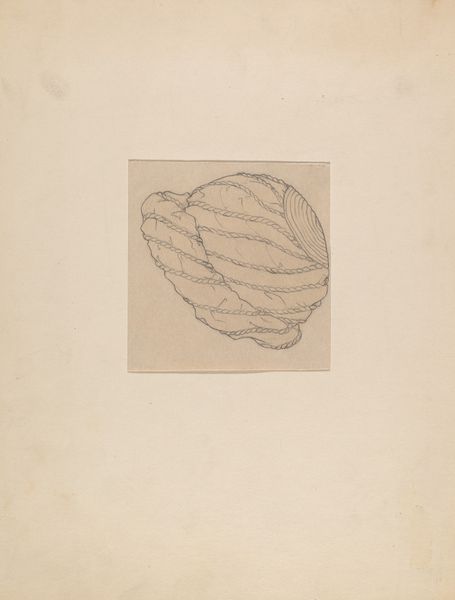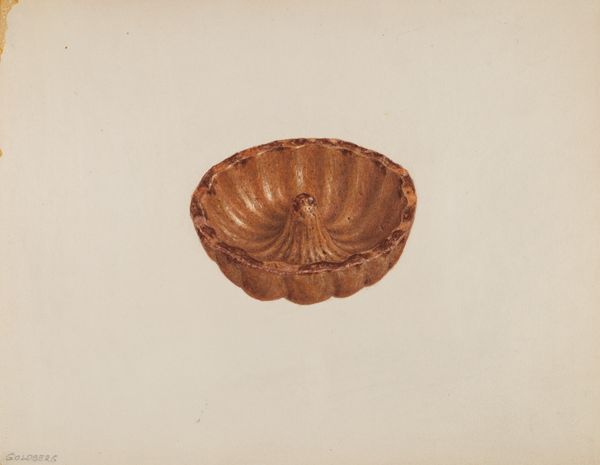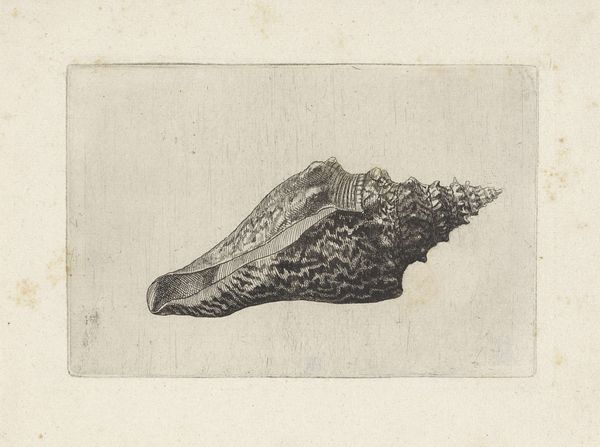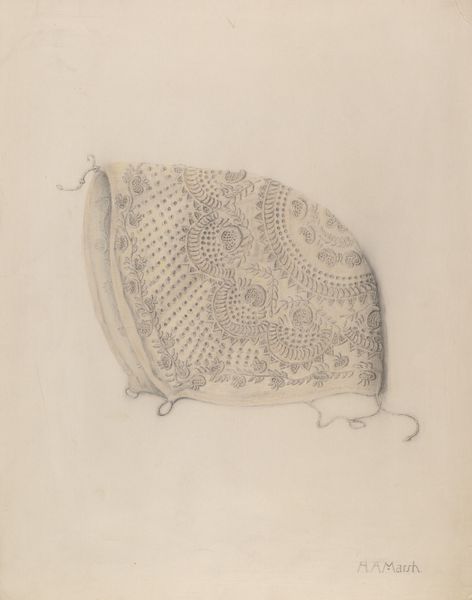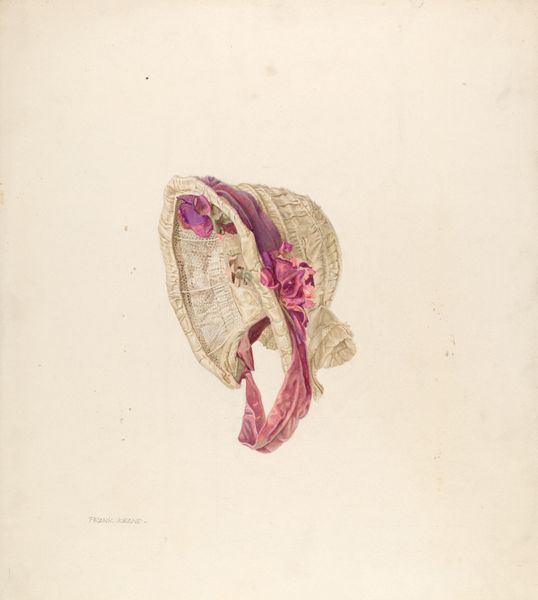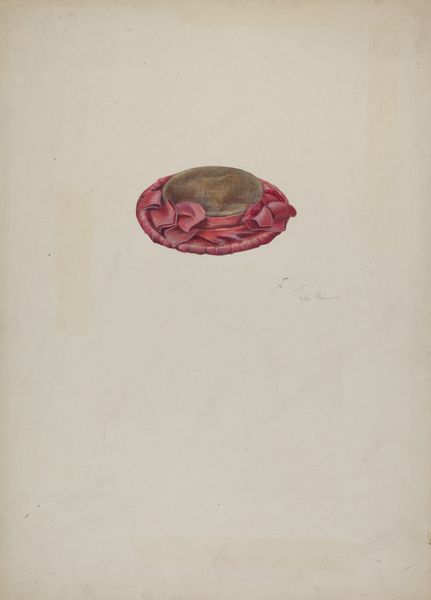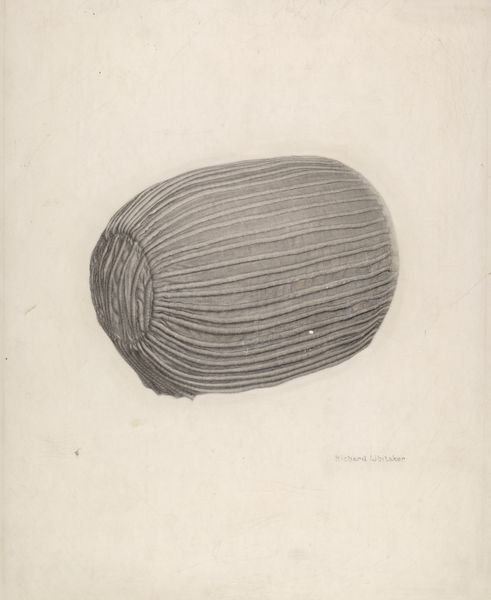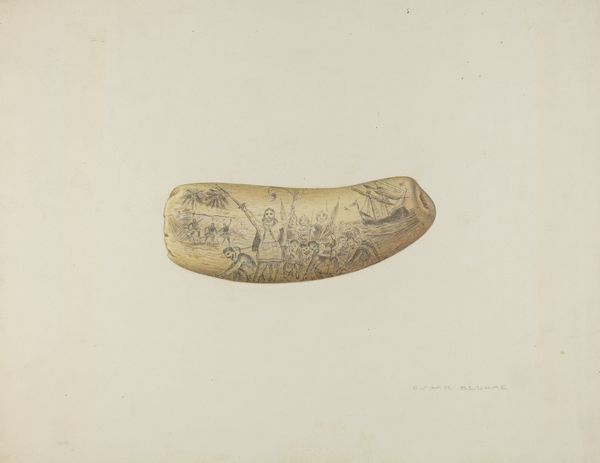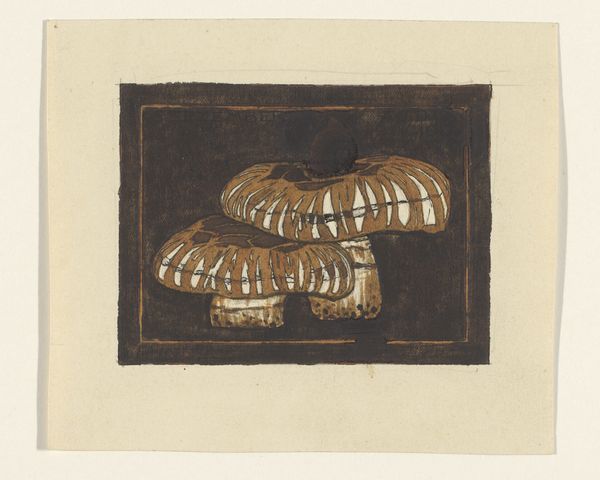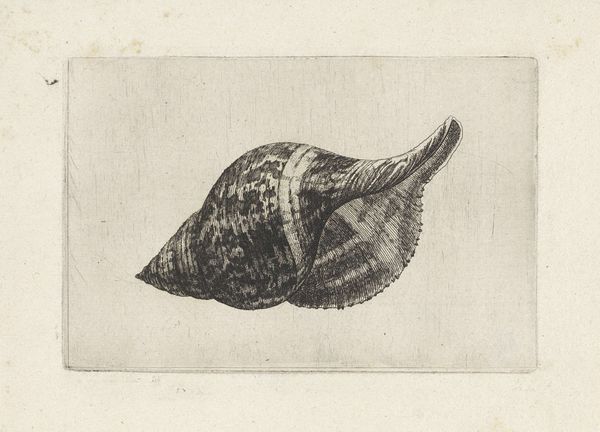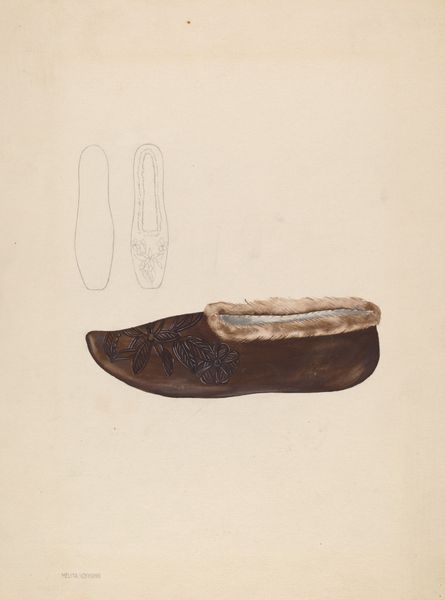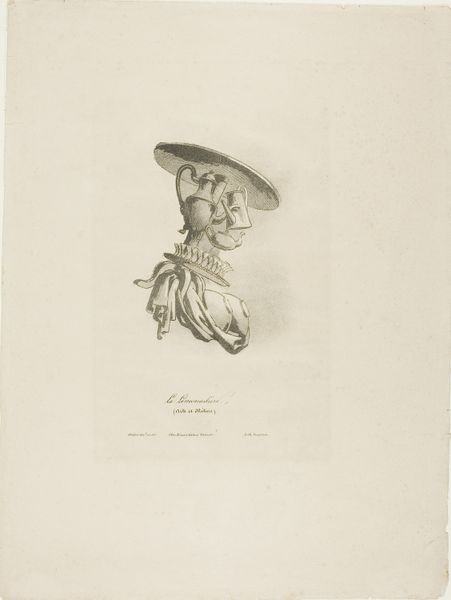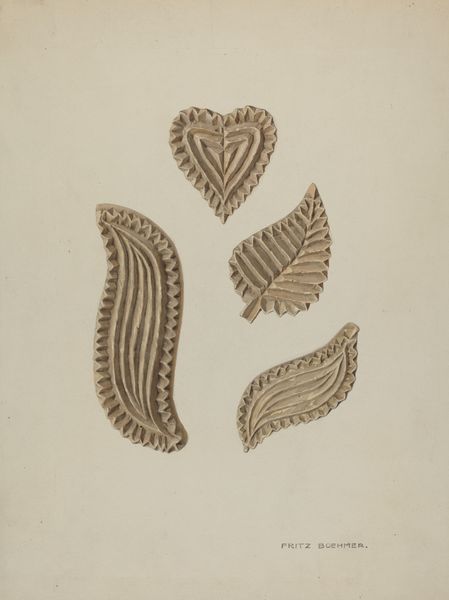
drawing, pencil
#
drawing
#
pencil sketch
#
etching
#
pencil drawing
#
pencil
#
watercolor
Dimensions: overall: 34.6 x 25.7 cm (13 5/8 x 10 1/8 in.)
Copyright: National Gallery of Art: CC0 1.0
Curator: Look at the gentle rendering of these knitted slippers! This is "Peg'in Stitch Boot" by Syrena Swanson, dating from around 1937. It seems to be primarily rendered in pencil and possibly some watercolor washes. Editor: They feel so delicate, almost ethereal. There’s a sense of warmth emanating from them, a kind of domestic tranquility. It’s the soft, faded rose hues, I think. Curator: Yes, and think about what footwear signified then, particularly knitted slippers. They were often made at home, embodying the labor and love of women. These slippers represent a deeply gendered space of caregiving, a powerful symbol of the domestic sphere. We could unpack so much regarding labor and economic history through them. Editor: Definitely. Slippers carry so much symbolism. Comfort, certainly. Safety, the retreat from the outside world. In many cultures, removing one's shoes is a sign of respect when entering a home, isn’t it? These could signify entering a space of intimacy, of rest and family. Curator: Precisely. And during the Depression era, resourcefulness and frugality became necessities. The fact that these are clearly handmade elevates that notion. They aren't just slippers; they're testaments to resilience and female ingenuity, perhaps. Editor: The stitching also evokes images of women coming together in circles, knitting and sharing stories, forming support networks during times of uncertainty. The imperfections in the stitch become endearing. Curator: A visual record of intimate, female-centric moments. Swanson is pointing towards these social networks, as well as, this emphasis on handmade as almost radical acts of care. Editor: Exactly! In this simple image of slippers, we’ve unearthed complex cultural narratives. It's amazing how much these humble objects speak to us. Curator: Indeed. Swanson offers a delicate, yet compelling visual essay about home, resilience, and the oft-unacknowledged labor of women during a transformative period.
Comments
No comments
Be the first to comment and join the conversation on the ultimate creative platform.
